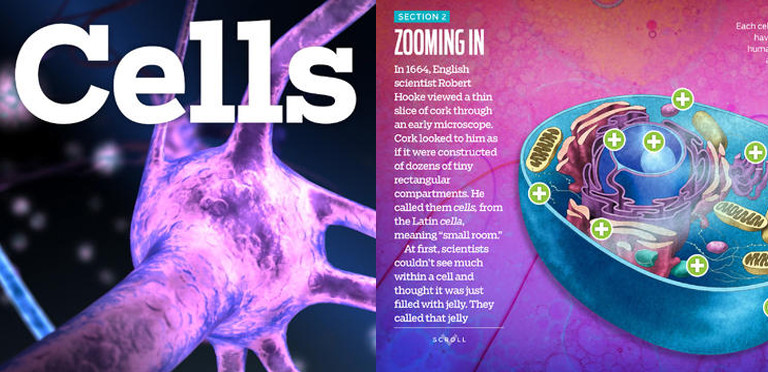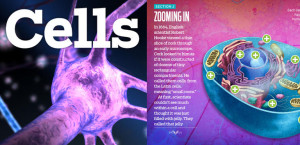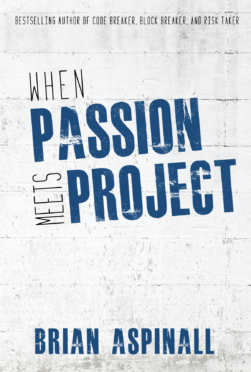There has been a lot of talk about textbooks in my circle of peers. Not digital textbooks, but the heavy physical ones.
I’m going to start by saying that I like the textbook as a resource. Not so much in mathematics, but in certain content areas the textbook is a bucket of valid information. Others question the authenticity of wikis, I tend to pull facts from that trusty textbook as it has been proofread for factual evidence by a group of highly educated individuals.
Having said that, I believe the textbook is a resource – but not the only one. I think we used to rely heavily on it as a source of information but in reality textbooks usually just scrape the surface. It’s an easy go to for teachers but be be careful not to get stuck in a rut of always using it.
For example, we are now studying Cells in my grade 8 Science class. Traditionally, students were to identify and label parts of cells and parts of microscopes. There is always a great 3D representation of both plant and animals cells in any elementary Science textbook. Full of colour, bolded terms to make filtering the information easier. All good information, don’t get me wrong, but very knowledge based. Students should be able to use this knowledge and apply it in such a way rather than just label diagrams. I labelled diagrams in school in the 90s.
Long story short, I synced iCell onto our school’s iPads.
iCell is an app that shows a 3D representation of plant, animal and bacteria cells. The difference between this tool and the textbook is the hands on nature of the app. Kids can zoom, spin and rotate the cells. Kids can click on parts of the cells to see what it is and what it does. Kids can distinguish between how much text is shown under each label (beginner, intermediate, advanced) essentially building the DI right in. Suddenly, this lesson was scaffolded. Students were filtering information at their own pace. Students were then sharing it with their peers without me prompting to do so. And every student now has the 3D model in his or her pocket.
This never happens when we use the textbook.
I think the textbook will always exist by definition. What it looks like will change drastically. I still want to use it as a quick go to instead of always ‘Googling it’.
With tools like Nkwiry (read about it here), I am essentially having my students curate resources together creating a rich, valid set of content with way more value in terms of engagement and accountability. My students essentially make their own textbooks. Many call this a ‘flipped class’ model. I call it common sense. Have them find, filter and curate the same information from the book and you will be pleased with the engaging content you get it return. Better yet, if they cannot find anything great, have them create a new resource using (FILL IN APP NAME HERE).
Before I finish I am reminded of last year’s particle theory lessons. After looking at the section in the book, students had to understand what the lines meant between solids, liquids, and gases. Those lines and arrows represent movement. Tough for many kids to see on that still image that solid particles are closer together and move much more slowly than gas particles based solely on arrows and squiggly lines. I know I could have found a great demo online about it. Instead I had them program the different behaviours of particles using Scratch by MIT. Not only do these students now see the difference in terms of the behaviour of particles, they have created the animation showing the movement. This approach was also much easier to assess. And thanks to the beauty of Scratch, this lesson becomes cross curricular. There is a ton of mathematical concepts built in to coding in Scratch.
For those of you interested in models. The “R” in SAMR is very evident in the above example. Much better than just reading about the particle theory on iPads (“S” in SAMR).
So Mr. Textbook. It’s time to adapt or you will be left in the dust. What do you think? How often do you use textbooks in your lessons?
HudsonAlpha iCell (free)
Cells by Kids Discover ($3.99)


 For all the kids who grow up in a small town and think they don’t stand a chance. You do. I was once that kid.
For all the kids who grow up in a small town and think they don’t stand a chance. You do. I was once that kid.